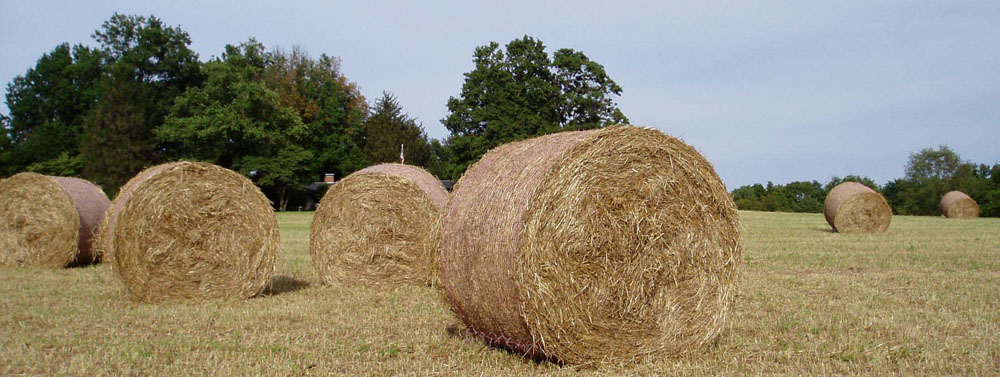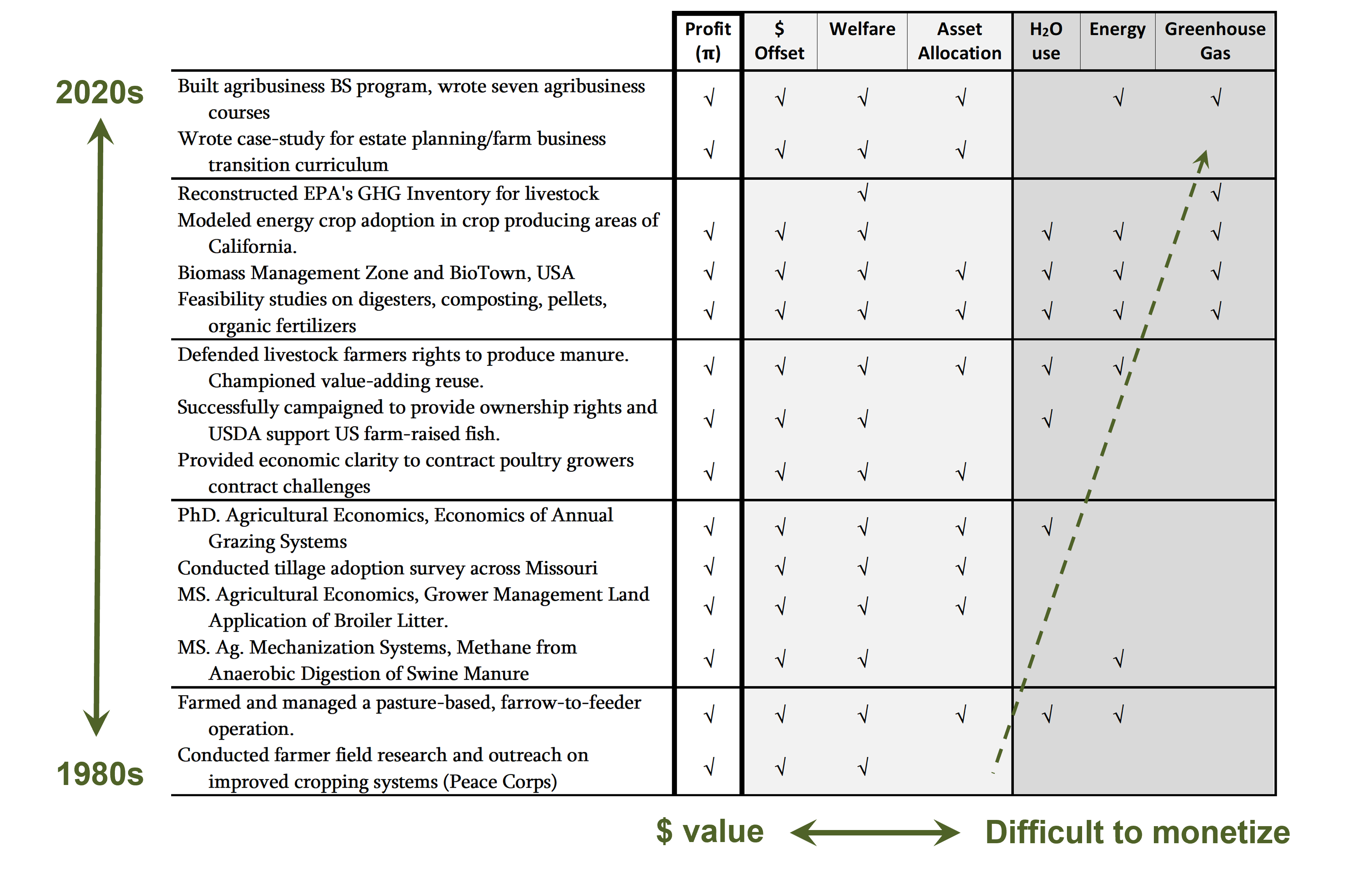Adding Value to Benefits, Not Readily Monetizable
What?
This is what biomass systems economists do. We add value to goods and services in value attributes that go beyond having a price in dollars. Most of my economist colleagues are brilliant price analysts. I am a manure visionary by education and experience. Our economic analyses are correctly driven by the dollar value of everything being analyzed. Where does a non-price economist fit in? We develop opportunity cost estimates in value attributes other than the traditional monetary values. We build models and scenarios that transform what is known into frontiers of information that are unknown.
This blog’s table emerged from the Operations Management class I teach at Greenville University. Comparing 40 years of unanticipated career analytical tasks that emerged unexpectedly, without existing models, and required new performance metrics of some kind. Production system models are best over-built, as reasonably possible, to see the indirect changes outside of the specific process of focus.
The list on the left are the largest frontier modeling tasks over 40 years. The columns to the right of the career projects are the different attributes of value. These difficult-to-monetize value attributes behave as currencies in equilibria without monetary value. The first column of value is profit. Most all the career analytical work was either about generating more revenue or reducing costs.
The next three columns are about value attributes that are closely related to profit. Dollars ($) offset are effectively savings. When adding value to organic wastes, sometimes the benefit is a cost that was not incurred. Reduced distance and time in hauling manure away from an encroaching rural housing project by controlling odors with an anaerobic digester is an example of adding value by not incurring a cost. Welfare is uncomfortably vague, but we are learning to quantify and value social and cultural capital. These are the values contained in welfare value attribute. And the third column evaluates capital budgeting and investments over time.
The last set of three value attributes are further removed from a dollar value than all the others. Engineers have been doing mass-balance studies for decades. This is where the mass of compounds through various transformations is determined and balanced without regard to value. Balancing equilibria on metrics other than dollar value formed the framework of life-cycle assessments (LCA), where quantities of compounds are estimated across the life cycle of a product. These calculations that track quantities of materials through production processes from raw inputs to final use, are not easy, but rely on tracking materials across the life cycle system, not at a single transformation point.
More directly, in a profit optimization problem, water, energy, and emissions like greenhouse gases may show up as constraints (cannot go above x, or below y). In the Bioenergy Crop Adoption Modeling work at UC Davis, profit was the economic decision driver that was influenced by balancing water and other constraints. It is possible that water reallocation might allow increases in a higher-valued irrigated crop if a lower valued energy crop like canola also required less water.
The list moves from the 1980s at the bottom to the 2020s at the top. Moving upward from the 1980s the demand for frontier solutions drove an expansion of modeled value attributes beyond profit. As Biomass Rules, LLC models became more sophisticated due to a growing need to know more, it also became easy to include the other attributes even when they were not the direct focus of the analysis.
The list moves from the 1980s at the bottom to the 2020s at the top. Moving upward from the 1980s the demand for frontier solutions drove an expansion of modeled value attributes beyond profit. As Biomass Rules, LLC models became more sophisticated due to a growing need to know more, it also became easy to include the other attributes even when they were not the direct focus of the analysis.



Comments
Adding Value to Benefits, Not Readily Monetizable — No Comments
HTML tags allowed in your comment: <a href="" title=""> <abbr title=""> <acronym title=""> <b> <blockquote cite=""> <cite> <code> <del datetime=""> <em> <i> <q cite=""> <s> <strike> <strong>